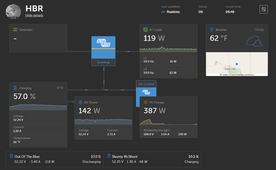bds70
New Member
So as I near the moment of putting my new diy solar together in my bus I have been watching many videos and reading lots on here.
My question is the numerous settings on various bits of hardware.
Starting with the MPPT, then the BMS, then the Victron smart shunt, and the two Victron 3000w inverters. Each have their own settings, but which takes priority over which.
I know the BMS settings protect the battery and the MPPT settings should be inside that. (By inside I am presuming that means less or lower, is that right?)
But what do the smart shunt settings affect and then of course the inverters also have battery and charge settings.
It is somewhat confusing.
Can I get a "Road map" so to speak from the experts.
Thanks
My question is the numerous settings on various bits of hardware.
Starting with the MPPT, then the BMS, then the Victron smart shunt, and the two Victron 3000w inverters. Each have their own settings, but which takes priority over which.
I know the BMS settings protect the battery and the MPPT settings should be inside that. (By inside I am presuming that means less or lower, is that right?)
But what do the smart shunt settings affect and then of course the inverters also have battery and charge settings.
It is somewhat confusing.
Can I get a "Road map" so to speak from the experts.
Thanks




